I would love to run a blog where every recipe I posted was a successfully completed one. Unfortunately, that’s just not the way it’s going to be. Don’t get me wrong – I’m going to do my best to try to show you what things “should” look like. It’s just that I’m still a beginner. Especially when it comes to bread. Bread is a tough customer.
As I watched my dough settle into a pancake in the oven last night, I decided that I wasn’t going to write this post. I asked myself “How could I? How can my screw up help anyone?” Then I thought about it for a second. What was the first thing I did after I realized things weren’t going to go the way I had planned? I’ll tell you – I search online to find out why my bread was so flat. I found the answer and right after I read a few articles, it dawned on me that if I had searched this topic, someone else might too. I had an advantage though – I’ve got the recipe and I’ve also got tons of photos that will help isolate exactly where I ran into problems. None of the articles I read had this much to offer.
I’m going to go over this recipe below as if everything went fine. I’m also going to link out to other similar recipes, so if you’re interested in making a loaf of bread in your Dutch oven, you can certainly do that. You can either follow the recipe I did or choose another one. Just be warned that the reason I followed the recipe I did was because every other one took between 12 and 24 hours to complete. My recipe only called for allowing the dough to rise for 4 hours.
I may attempt this one more time. I believe I’ve found the issue and if I can correct it, I’d like to actually bake a nice loaf of bread. I’m suspicious of that possibility though, because I may have unearthed a flaw. Something that actually needs to be changed.
Ingredients
For starters, I’ll offer a link to the recipe I followed. It’s written by the fine folks over at Le Creuset.
You can either click over to that site and use their information or you can continue reading on below. I suggest you continue reading below because I’ve got some valuable information for you.
4 Cups Flour
1 1/2 Cups Water
1 Teaspoon Active Dry Yeast
Kosher Salt or Coarse Sea Salt
Vegetable Oil or Vegetable Oil Spray
Olive Oil
If you noticed that there is no indication of how much salt to use, you’re not alone. I had to improvise from another recipe and decided to use 1 and 1/2 teaspoons.
In case you’re interested, here’s a link to another, very similar, recipe:
No Knead Dutch Oven Crusty Bread
Step-by-Step Instructions
Please continue on below. I’ll include photos for every step of the way.
Combine Ingredients
The first thing I did was to combine the flour, water, yeast and salt in a mixing bowl. I used our heavy duty electric mixer.
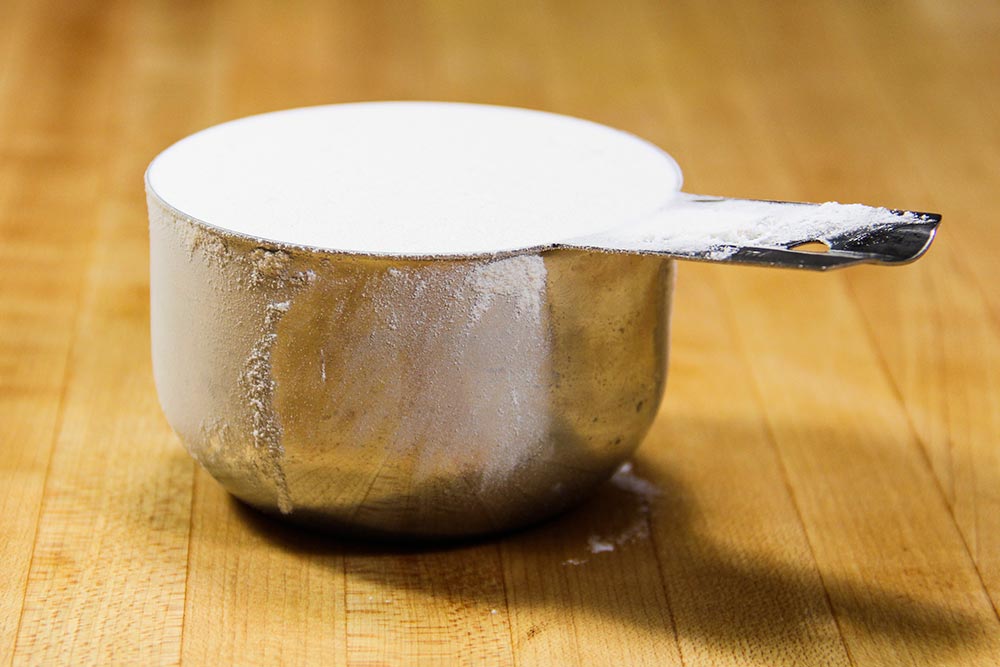

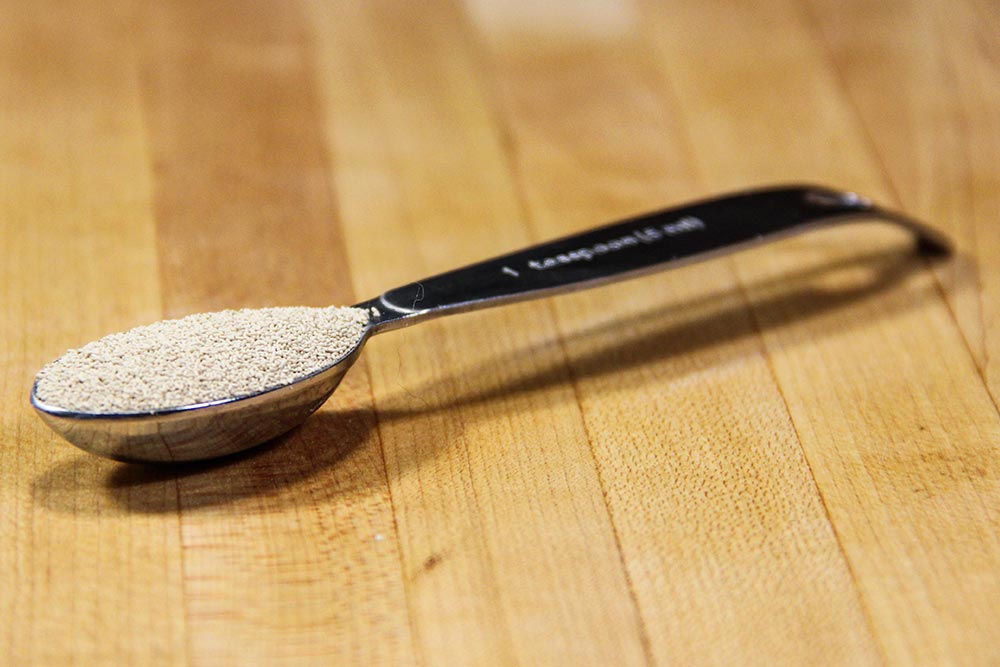
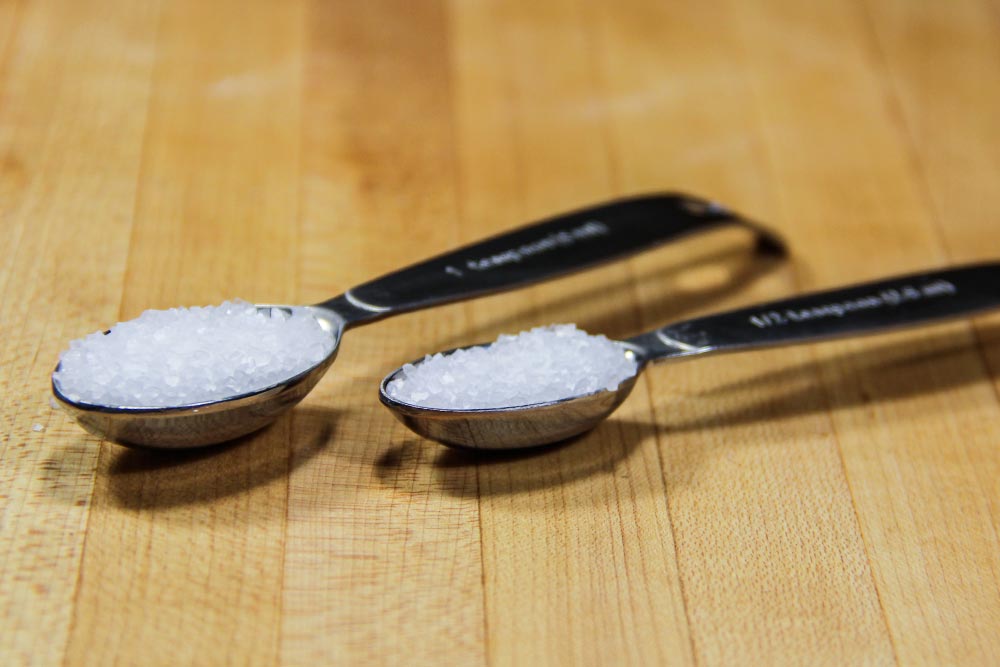
As I was doing this, I wondered about a few things. First, I thought you had to activate the yeast like other recipes called for. I’ll tell you, the dough had no issues with rising. It rose once, I pounded it down and then it rose again. It wasn’t fast – it probably took the full 4 hours the first time, but it did rise.
The second thing I wondered about was – what in the world was this kosher salt I kept reading about? Was it any different than sea salt or regular table salt? I found a nice article that gave me the answer:
Ask The Food Lab: Do I Need To Use Kosher Salt?
Apparently, the three salts are virtually identical, except for size and shape. You need to be careful when a recipe calls for sea salt or kosher salt, because each grain of that type of salt is much larger than regular table salt. This means that one teaspoon of table salt is the equivalent to two teaspoons of the more coarse salt.
Mix the Dough
Once the ingredients were in the mixing bowl, I ran the mixer for about 5 minutes. The dough had come together nicely and the mixer was no longer doing anything beneficial after that time. The dough had formed into a fairly tight ball and was hanging on to the dough hook. Because of this, I pulled the dough ball out of the bowl and kneaded it by hand.
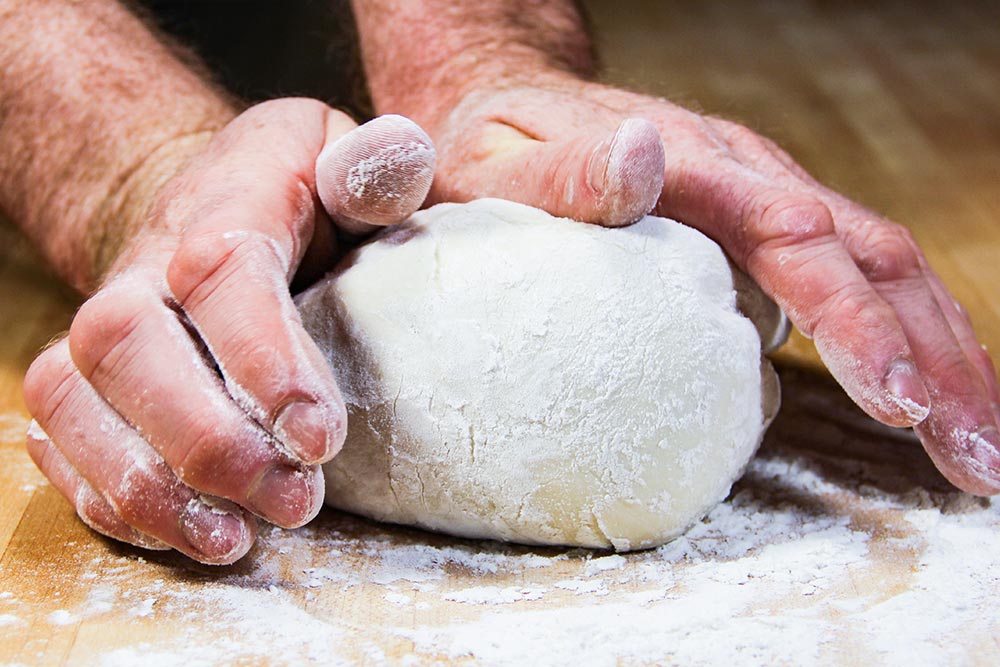
The goal was to get the dough as elastic as possible. The recipe I used said that I should be able to grab the dough and pull it apart to such a point as it to become transparent. After a few minutes, I got it to that point. This is what I ended up with:
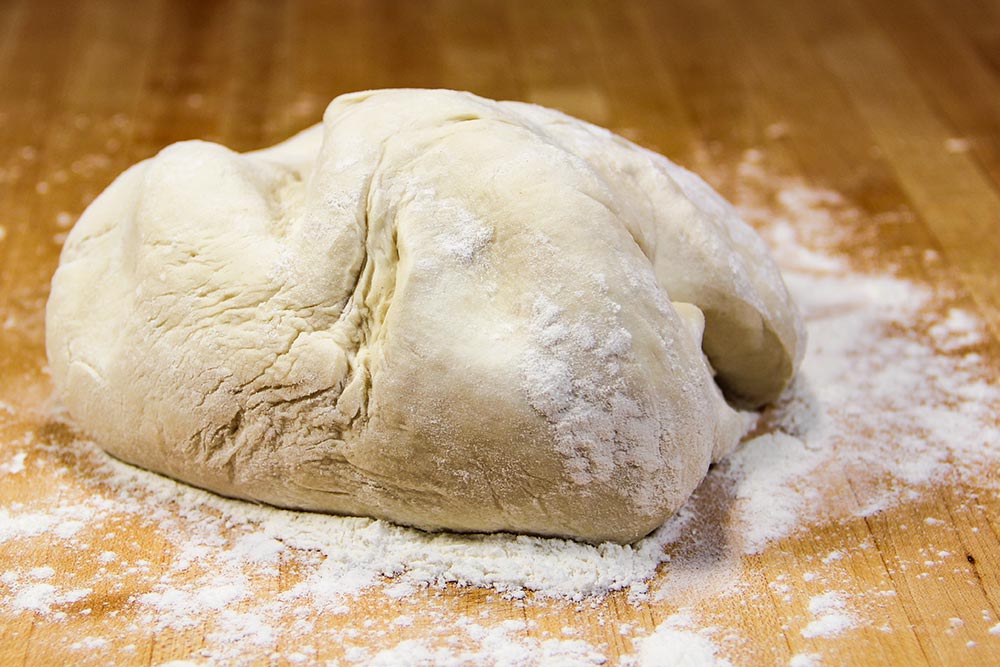
So far, so good.
Let the Dough Rise
The next step is to let the dough rise to twice its original size. This will take between 2 to 4 hours, depending on the ambient temperature. My dough took the entire 4 hours because my house was probably around 68 degrees at the time. To complete this step, I returned the dough to the mixing bowl and covered it with clear plastic wrap.

After 4 hours, this is what I had:
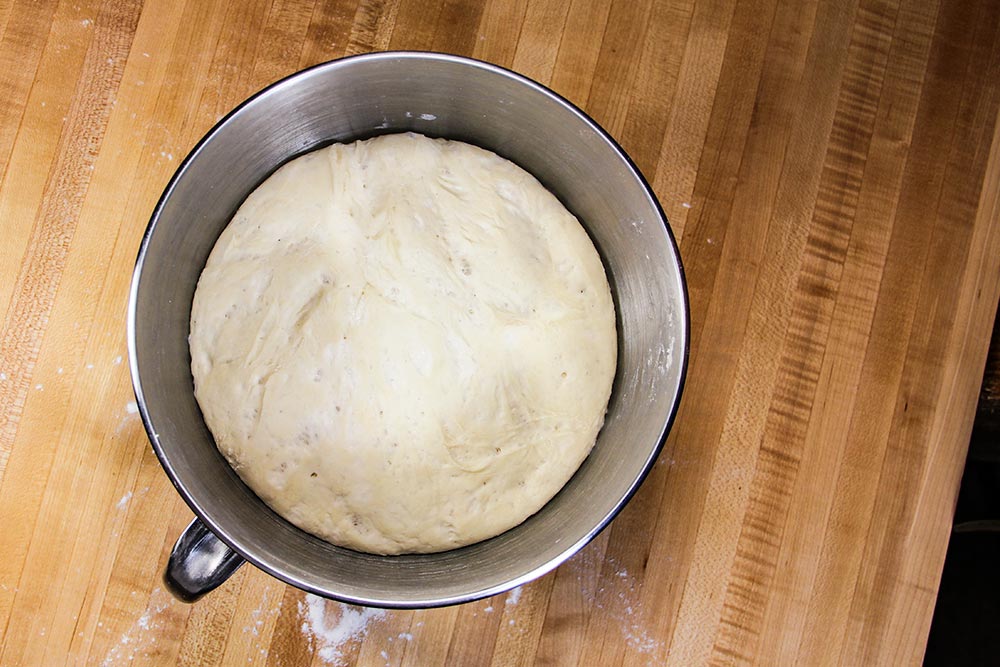
Knead the Dough
After the dough had risen in the bowl, I pulled it back out and kneaded it to release all the gas that had formed inside of it.
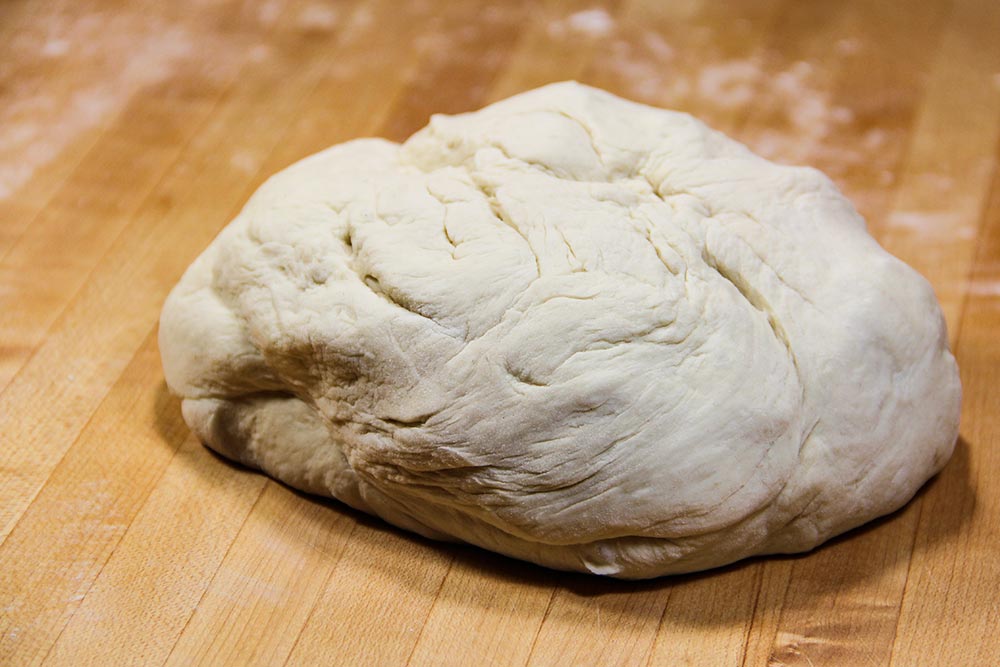
This may have been the beginning of my mistake. Later on in this recipe, it calls for a tight ball. I’m not sure I was able to get things as tight as I would have liked because, while I knocked the dough down, I didn’t knead it thoroughly enough.
Let the Dough Rest
The goal with this step is to allow the gluten to relax. I did this by letting it sit for 10 minutes under a towel.
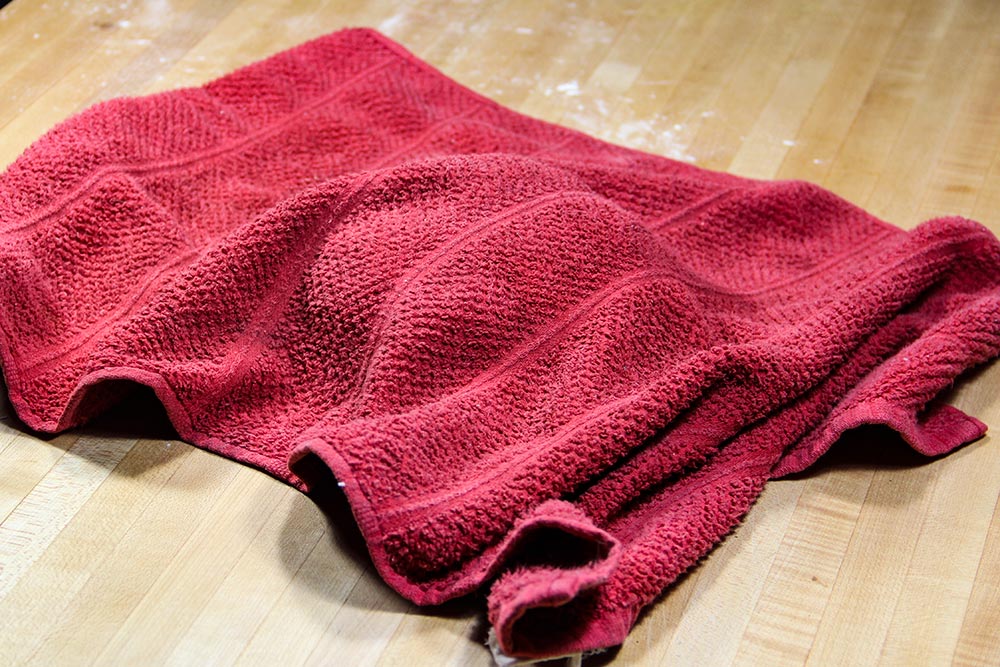
Shape Dough Into a Ball
This is what I was just talking about. Here, I was supposed to shape the dough into a tight ball. “The tighter, the better.” As you can see, the dough doesn’t look very tight, nor does it look like a ball.
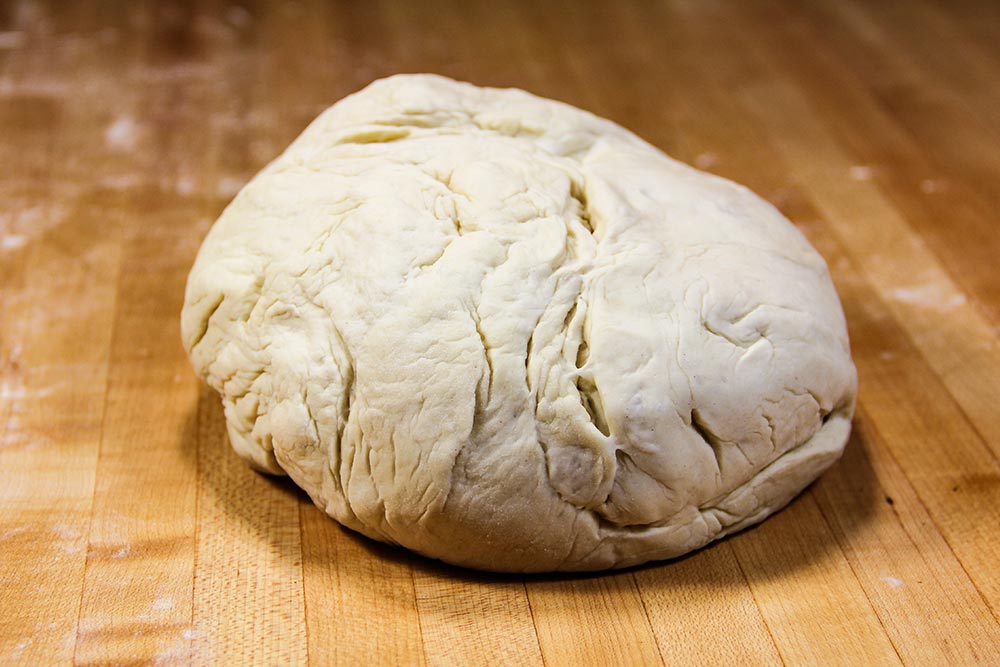
Let Dough Rise in Dutch Oven
After the dough was shaped somewhat like a ball, I put it into an oiled and covered Dutch oven to let rise.
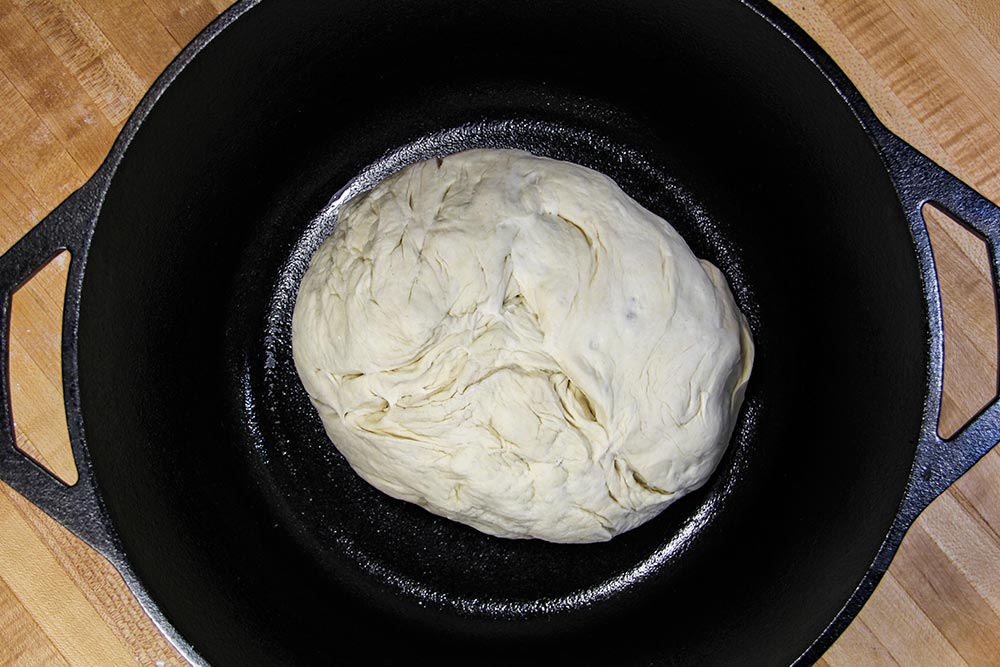
After about an hour, this is what I had:
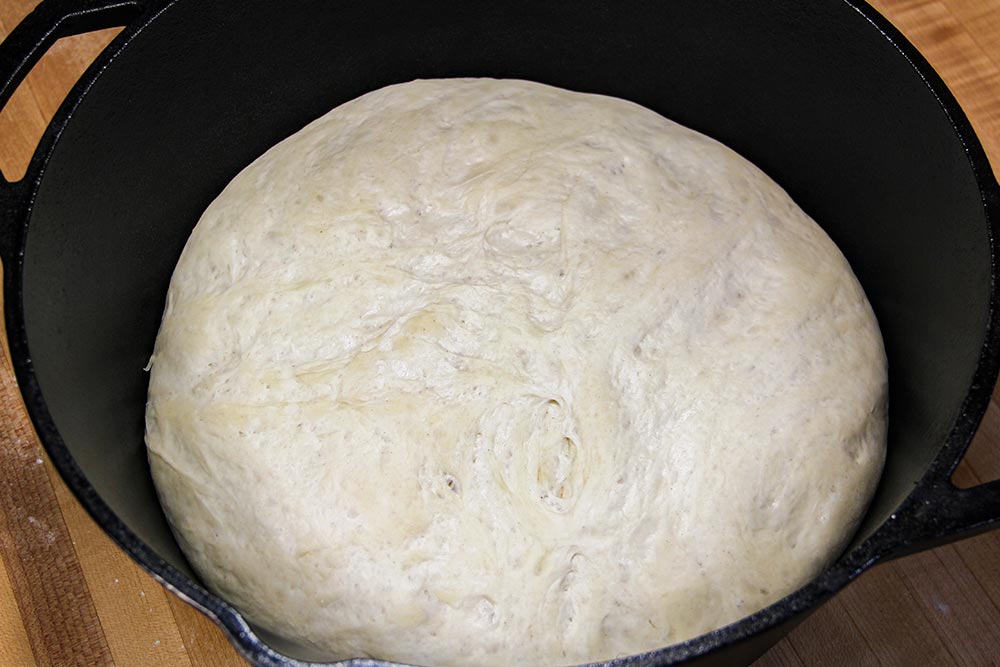
As you can see, I had myself an out of control lump of dough. I believe I had “proofed” the dough too long. Proofing is merely the second rising of the dough. To learn more about this concept, please take a look at this resource:
Breadmaking 101: All About Proofing and Fermentation
From what I can gather, if you over-proof your dough, there’s no coming back from it. It will most certainly collapse. To read more about what others say about failed bread making attempts, take a look at this:
Something obviously had gone wrong with this step. The primary issue was that I didn’t know what to look for. I thought that, while the loaf would have a ring around its base from touching the sides of the Dutch oven, it would at least rise to make a nice dome. Exactly the opposite happened.
Another issue I discovered was that in other recipes, the Dutch oven was supposed to be pre-heated in the regular oven. In this recipe, it didn’t call for that. So while this raw dough that was nicely domed inside the oven, it was being shielded by all that cast iron. It heated up slowly, making the proofing step last even longer. This is where I suspect there’s a flaw with the recipe I followed.
Nevertheless, I pre-heated the oven to 450 like the recipe told me to do.
Oil & Mark the Dough
At this point, I continued to follow the recipe instructions. I didn’t think anything was all that amiss. I brushed some olive oil over the surface of the dough and sliced a nice hash symbol on it as well. Supposedly, this hash is supposed to allow for expansion.
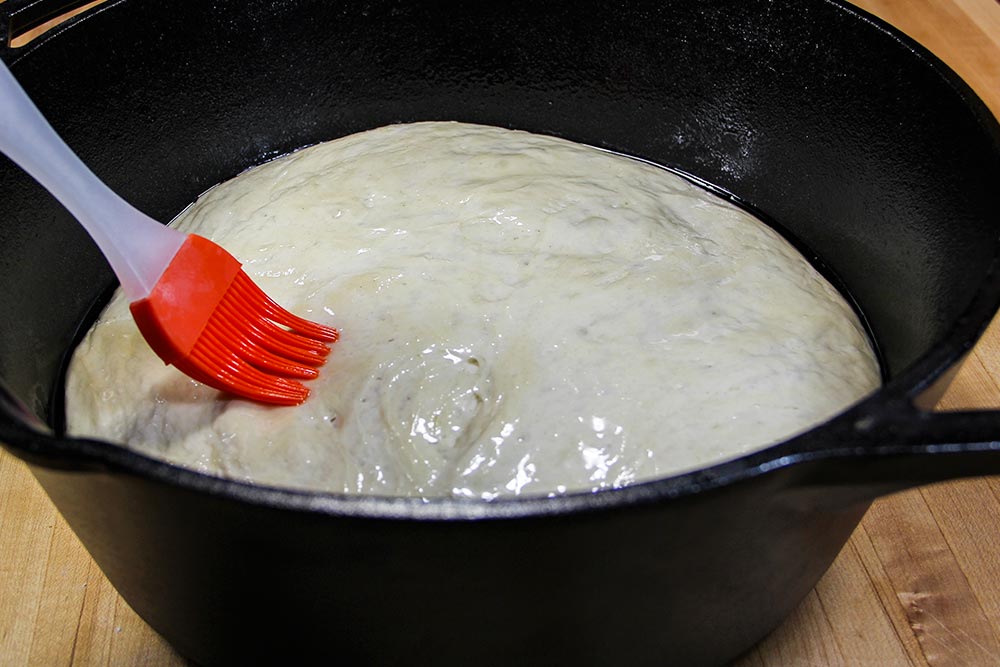
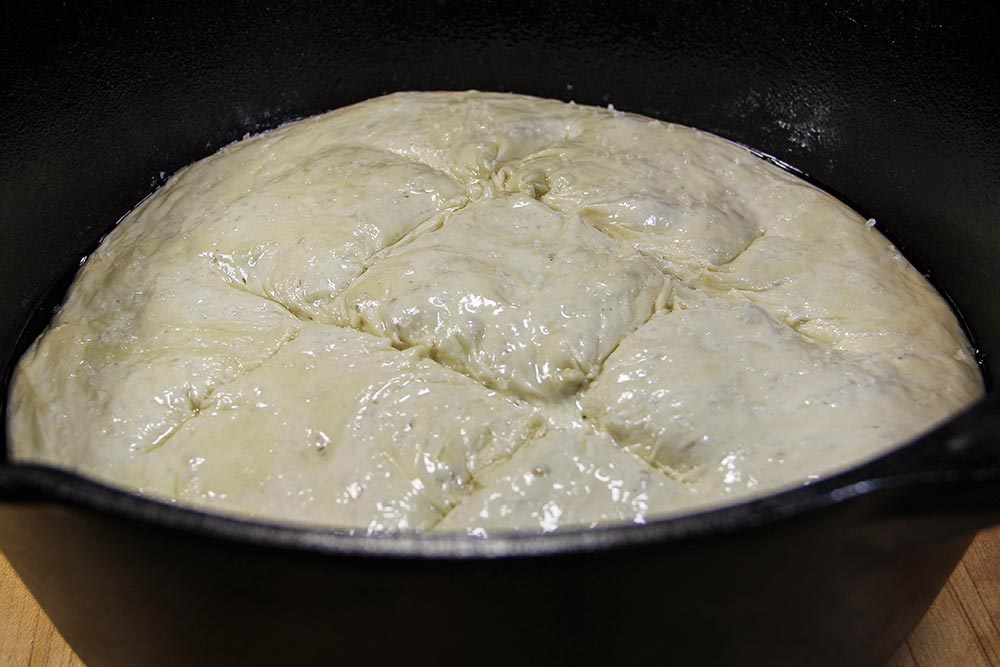
I also sprinkled the entire surface with some sea salt.
Bake the Dough
After everything looked the way I wanted it to, I placed the entire covered Dutch oven in the fully heated oven at 450 degrees for 30 minutes. After that time, I removed the lid and lowered the temperature to 375 degrees and let the bread bake for another few minutes until the top looked nicely browned.
The Final Product
Like I said, the dough collapsed and I ended up with flat bread. I guess if I was making flatbread, everything would be grand, but I wasn’t.
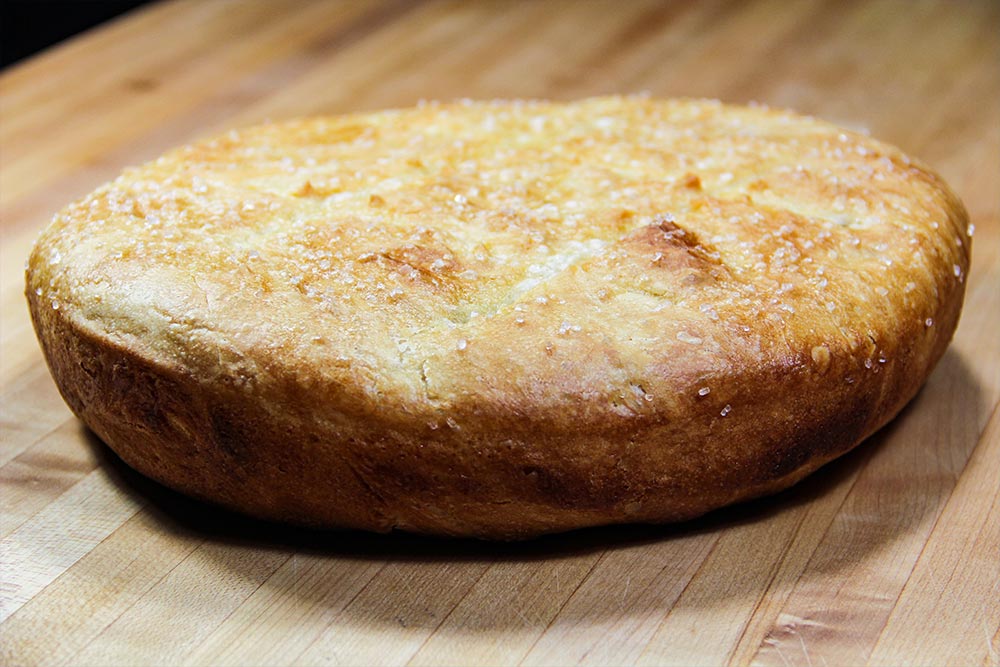
I did toast and butter a few pieces and they tasted well enough. It appears that the interior didn’t develop well either. It looks sort of like cake instead of bread.
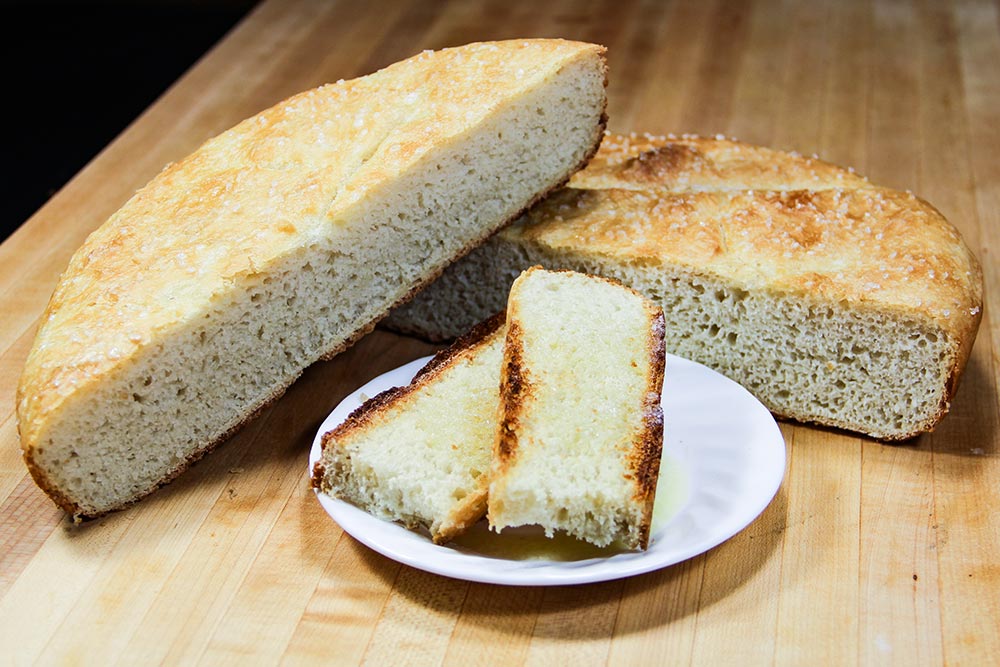
My Conclusion
I’ve come to terms with the fact that I need to learn how to make bread properly. I need to know what to look for and how things operate. There’s a section that covers this type of culinary skill inside my online cooking school course curriculum, so I’ll remain patient until I get to that point.
——
If you’ve enjoyed today’s post and found it helpful, please share it with a friend. Also, if you’d like to continue reading and would like our posts sent directly to your email inbox, simply sign up for our newsletter. We’ll send each and every post directly to you. Thanks!
Leave a Reply